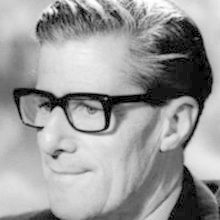Obituary: Sir Michael Stoker 1918–2013
Issue: World War I
29 May 2014 article

TWO FORMER MICROBIOLOGY SOCIETY PRESIDENTS REFLECT ON THE TREMENDOUS INFLUENCE OF MICHAEL STOKER ON BRITISH VIROLOGY AND CELL BIOLOGY.
It seems astonishing to recall that in the late 1950s Sir Christopher Andrewes, discoverer of human influenza virus and Head of the Bacteriology & Virology Division at the Medical Research Council’s National Institute for Medical Research, still insisted that all members of his Division had to be medically qualified. One of us (D. C. Burke) was a postdoc working with Alick Isaacs (who discovered interferon) and had to hang his coat in Chemistry. Such attitudes changed in 1958 when Michael Stoker was appointed as Professor of Virology and founding Director of the Medical Research Council (MRC) Unit of Virology at Glasgow University. Largely thanks to Michael, virology in the UK became a fully fledged scientific discipline, no longer a Cinderella to medical bacteriology in medical schools. Michael understood the importance of viruses as tools for understanding cell biology and there can hardly be a virologist in the UK – whether they know it or not – who is not indebted to his insights.
Michael was medically qualified and gained his first taste of research working on rickettsial Q fever while serving in the Royal Army Medical Corps in India during World War II. On demobilisation, he started his academic career at Cambridge in the attic laboratories of the Pathology Department. In collaboration with Peter Wildy (a future Society President), he studied herpes simplex virus. Michael used the new electron microscope at the Cavendish Physics Laboratories to visualise virus particles, where he became friends with Max Perutz, John Kendrew and James Watson. His success in Cambridge led to his appointment to the first UK Chair in Virology in Glasgow.
Michael regarded his nine years in Glasgow as the most fruitful of his career. With Ian Macpherson he developed the first non-cancerous immortal cell line, BHK-21/C13 cells, which were useful both for lytic virus propagation and for malignant transformation by polyoma virus. He recruited a group of outstanding scientists, including Peter Wildy, Lionel Crawford, Ian Macpherson, Kenny Fraser, John Subak-Sharpe and Mike Fried. Meanwhile, in the Glasgow Veterinary School, Bill Jarrett and collaborators adopted the MRC Unit’s cell and molecular biology techniques to discover feline leukemia virus and bovine papilloma virus.
In 1968, Michael became Director of Research at the Imperial Cancer Research Fund (ICRF) Laboratories in London (now part of Cancer Research UK). He arrived with key colleagues from Glasgow and recruited new cell and molecular biologists based on the Virology Institute model – namely to provide excellent facilities and give investigators free reign with lots of interchange and seminars.
Michael also persuaded three remarkable senior figures to join him at ICRF. Guido Pontecorvo, an authority on the genetics of the fungus Aspergillus, took up mammalian cell biology and through his discovery of cell fusion mediated by polyethylene glycol, he greatly expanded somatic cell genetics, which in turn led to the generation of hybridomas producing monoclonal antibodies. Renato Dulbecco, who had encouraged Michael’s interest in oncogenic viruses when Michael spent a sabbatical with him in California before moving to Glasgow, came to London (1972–77) where he was awarded the Nobel Prize for Physiology or Medicine. John Cairns, James Watson’s predecessor as Director of Cold Spring Harbor Laboratory, directed the ICRF Mill Hill laboratories, and modelled the epidemiology and causes of human cancer through the penetrating eyes of a molecular geneticist.
In 1979, Michael ‘retired’ to Cambridge to run a small lab, where he discovered ‘scatter factor’ (hepatocyte growth factor), which plays a key role in embryo development, organ regeneration and cancer cell invasiveness.
The mainstay of Michael’s life was his wife Veronica, to whom he was happily married for 62 years, and they frequently welcomed colleagues to their home. Sadly, Veronica predeceased Michael by nine years. They are survived by their five children and seven grandchildren.
Michael was elected a Fellow of the Royal Society in 1968, and was the Royal Society Foreign Secretary 1978–83. He was knighted in 1980, and was President of Clare Hall, Cambridge, 1980–87. He served on the Council of European Molecular Biology Organization and on the Board of the Ludwig Institute for Cancer Research. One recognition that Michael treasured, having joined the Society in its early years, was to be elected an Honorary Member of the Microbiology Society.
